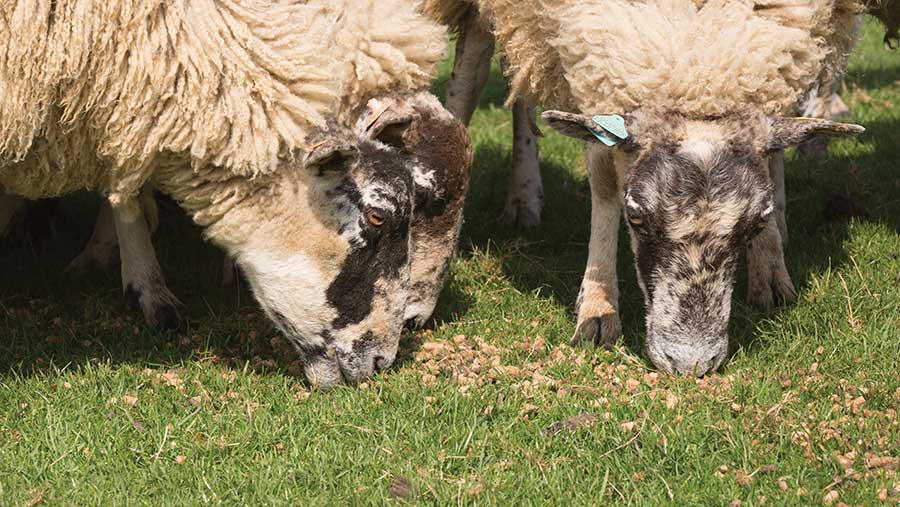5 things to consider before ditching sheep supplements
 © Tim Scrivener
© Tim Scrivener Use of concentrate feeds has had a major influence on sheep farming in the UK.
However, the shifting sands of both input and commodity prices mean even if feeding supplements was once a sound choice for business and animal performance, it may no longer be the case.
As a result, there is a groundswell of support for a return to grass or forage-only systems. It is great to see farm enterprises forging resilience – although, like any change, it is not without pitfalls.
See also: The system that helps a sheep unit save £30000 on feed
About the author

Since joining Black Sheep farm vets in 2018, Kaz has helped co-ordinate a calving nutrition study with the University of Edinburgh, run various farmer education workshops, spoken to local farmers on how animal health is affected by stewardship schemes and built a practice database.
One of my lecturers advised: “It is important to learn from mistakes, and ideally someone else’s.” In that spirit, the following are some takeaways from my time in practice so far.
1. Plan for grazing
Supplements can be bought and fed almost instantaneously. The same cannot be said for forage: supply takes weeks or months of planning.
Enlist a professional (your vet or a grazing consultant) to develop a grazing plan.
There are many groups across the country for interested farmers – join one. Software may be helpful, although it is not essential when taking the first steps.
2. Take care with forage crops and leys
Herbal leys are particularly variable depending on the seed mix, establishment and growth stage.
Many forage crops (especially fodder beet) require careful transition, which may involve use of grass runbacks and additional fibre.
Cover crop mixes can include species that are not particularly palatable to sheep, such as buckwheat and phacelia.
Fodder beet, while a fantastic source of energy, loses much of its protein once frosted, and in wet conditions can quickly become a mess.
As our Kiwi peers are increasingly finding, any plan for winter grazing of a forage crop must address animal welfare and soil run-off.
And with fewer areas receiving adequate summer rainfall, they are also experimenting more with summer grazing of brassicas or legumes to fatten lambs.
3. Balance for trace elements
Concentrate feeds often balance the trace element profile of a ration.
By removing supplementation, we can unmask various deficiencies – including some now rarely seen, such as swayback (following copper deficiency in pregnancy), after cessation of concentrate feeding.
Forage crops can also be problematic – brassicas increase requirements for iodine, while fodder beet is often low across the board.
As ever, the first step should be to demonstrate a true deficiency through blood testing. Remember that trace element requirements vary by season, age and breed, while supply varies by type of forage grazed and soil type.
Once you have done this, talk to your vet about the most appropriate supplement.
4. Take it slowly
The riskiest time for an individual animal is often at times of change, such as weaning or transition from dry to lactating.
The same goes for farm enterprises, so take one step at a time, if possible.
For example, if you currently supplement all ewes at lambing time, see if you can manage your single-bearing ewes (comparatively low-risk) on grass or forage alone to start with.
5. Supplement if you need to
New converts can have an enviable zeal, but fundamental changes will take more than one season to get right. A “3 Rs” approach – replace, reduce, refine – to supplement feeding would be more sensible than going cold turkey.
Ultimately, some farms hold higher stock numbers than they might otherwise sustain on home-grown forage. Both animal welfare and profitability could suffer if pride prevents supplemental feeding, or destocking, or both.
